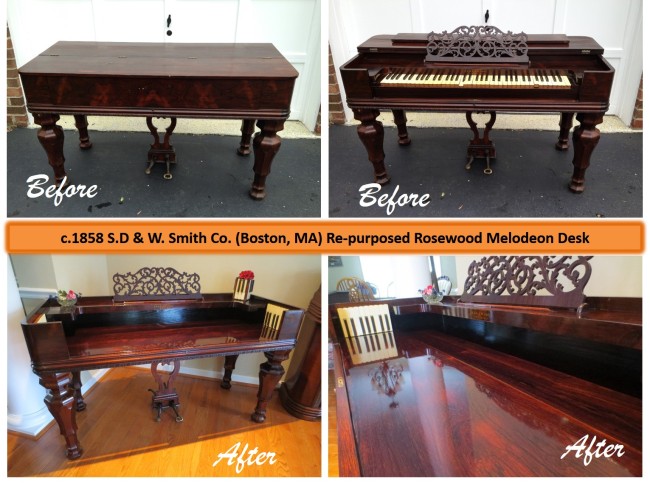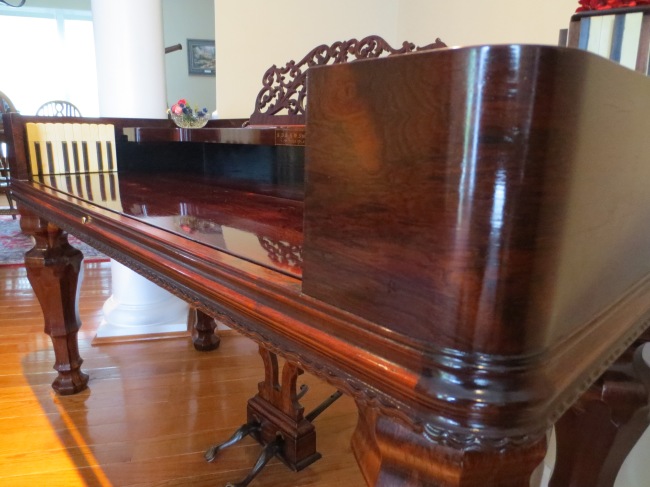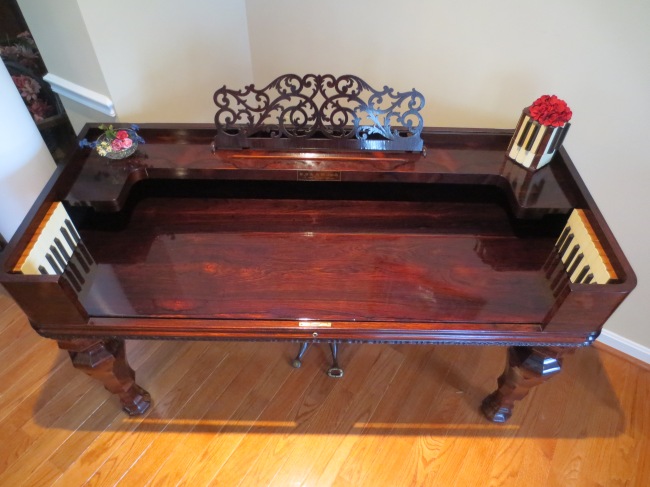

This pump organ was purchased in Alexander, Arkansas. It is made of quarter sawn tiger oak. It was manufactured in Brattleboro, Vermont. Based on its Serial Number, #273606 this organ was manufactured between 1894 and 1911. I completely disassembled the organ and repurposed it as an organ desk by repositioning the foot control board to the rear of the desk, creating a new desktop from an antique oak drop leaf table, moving the keys and pull stops to the rear of the base cabinet, and finally refinishing the wood finish. The desktop includes portal access for electrical cords. Additionally, I installed remote controlled LED strips on the upper and lower sections of the desk that provides the desk illumination and makes for a beautiful setting in any home or business. Lastly, this particular pump organ was built for use in a church setting, as the backside of the unit would be exposed to the church congregation, so the back panel is also fully finished with solid tiger oak panels with beautiful scroll panels that will emit awesome light shadows onto back walls with the LED lights illuminated in dark lit rooms.




























